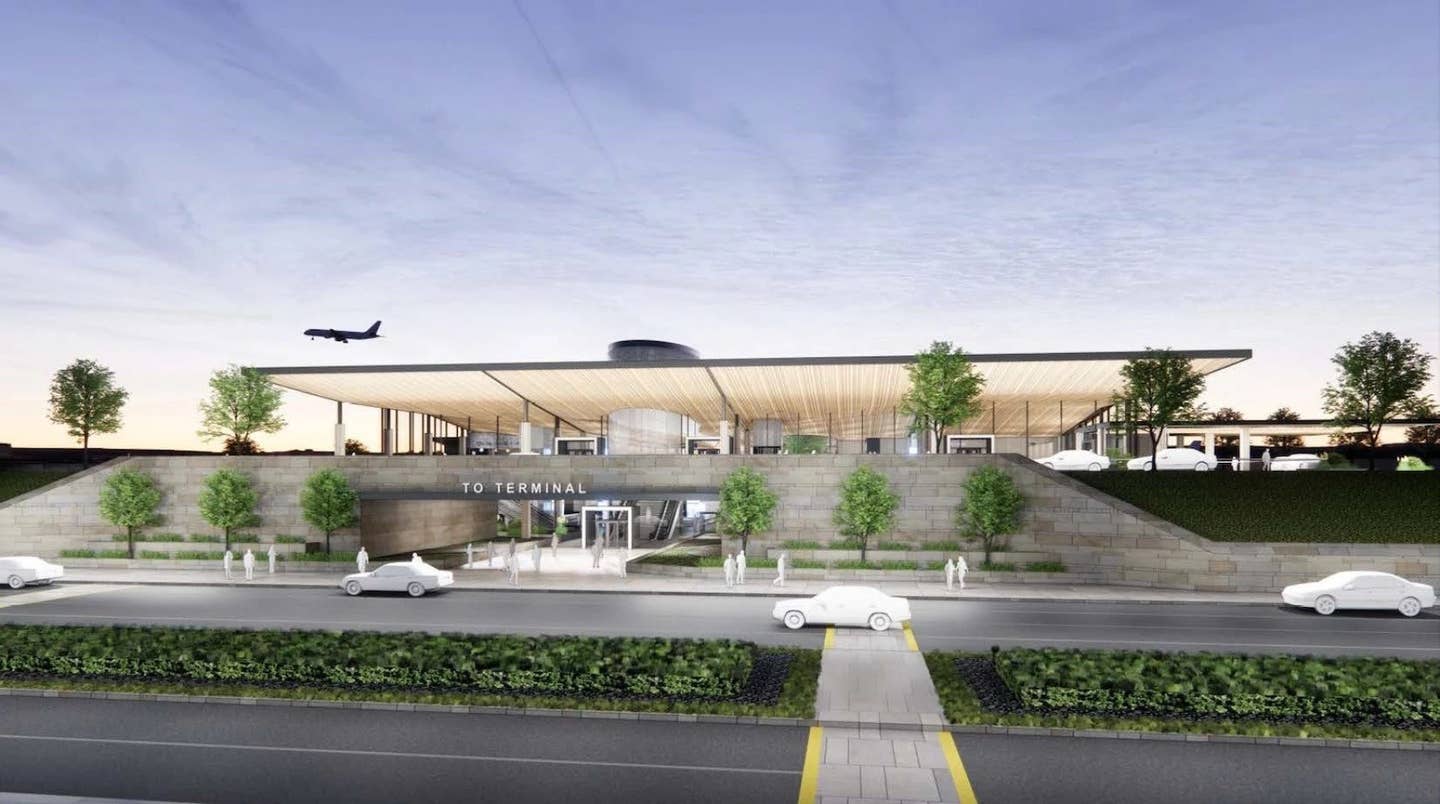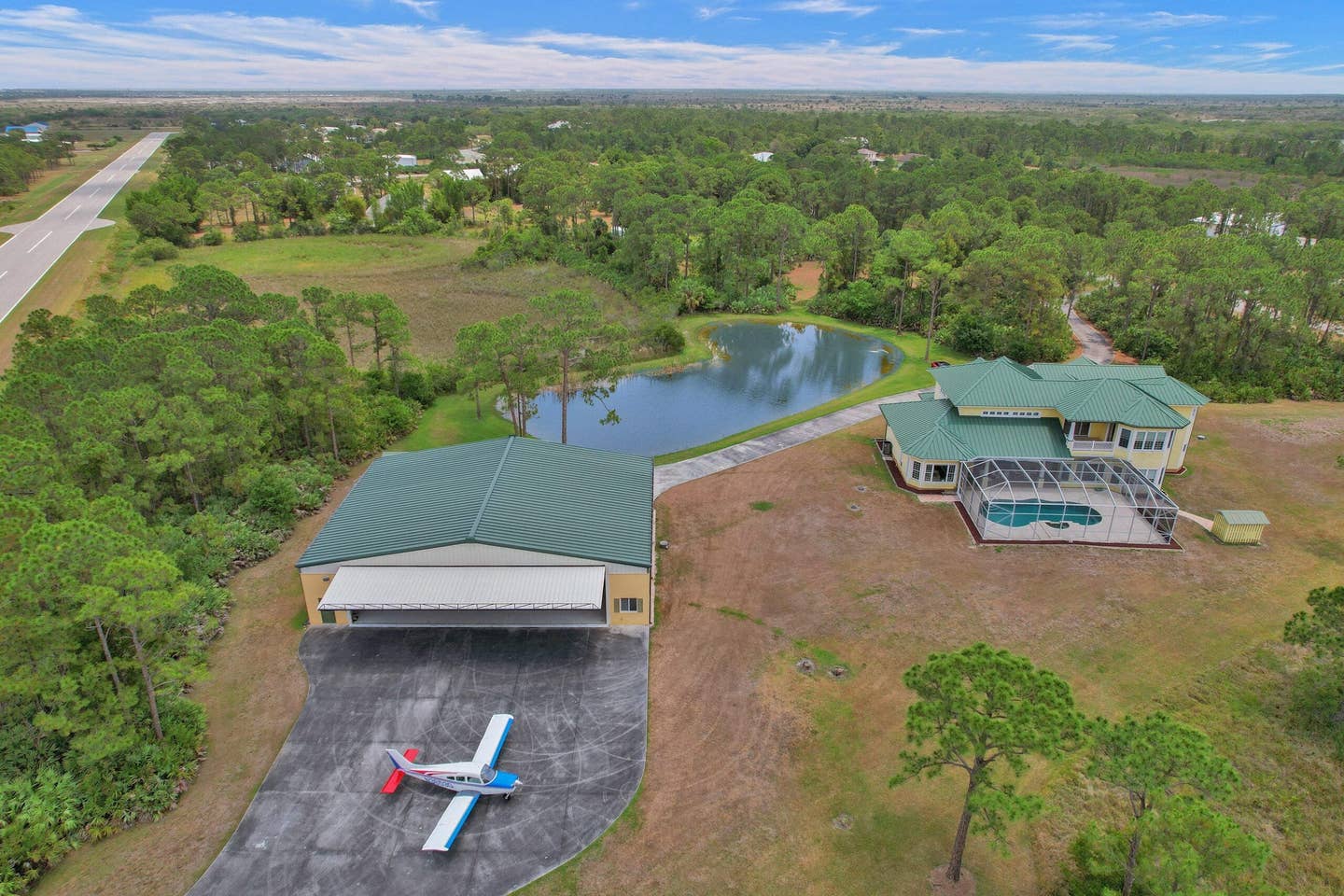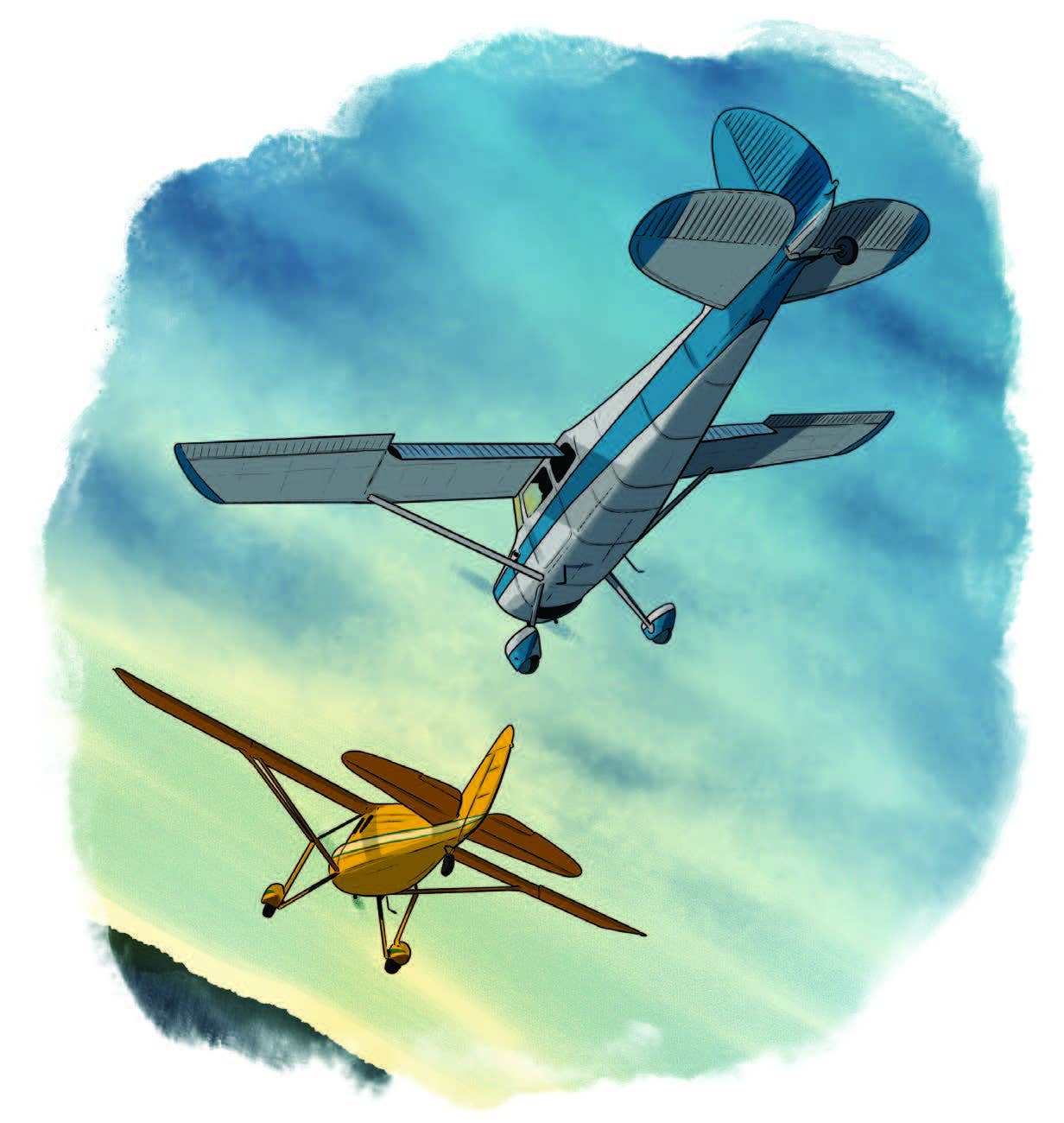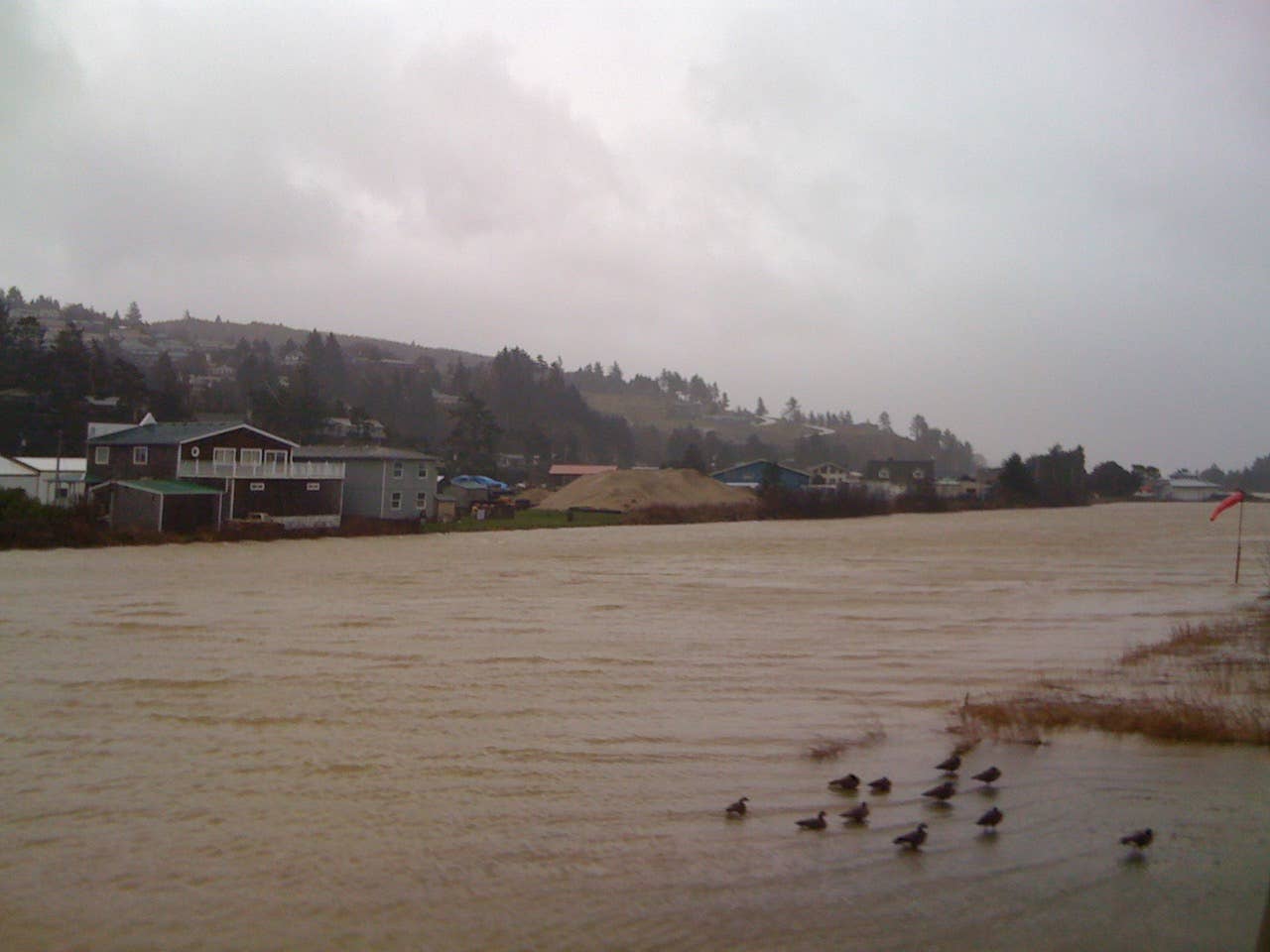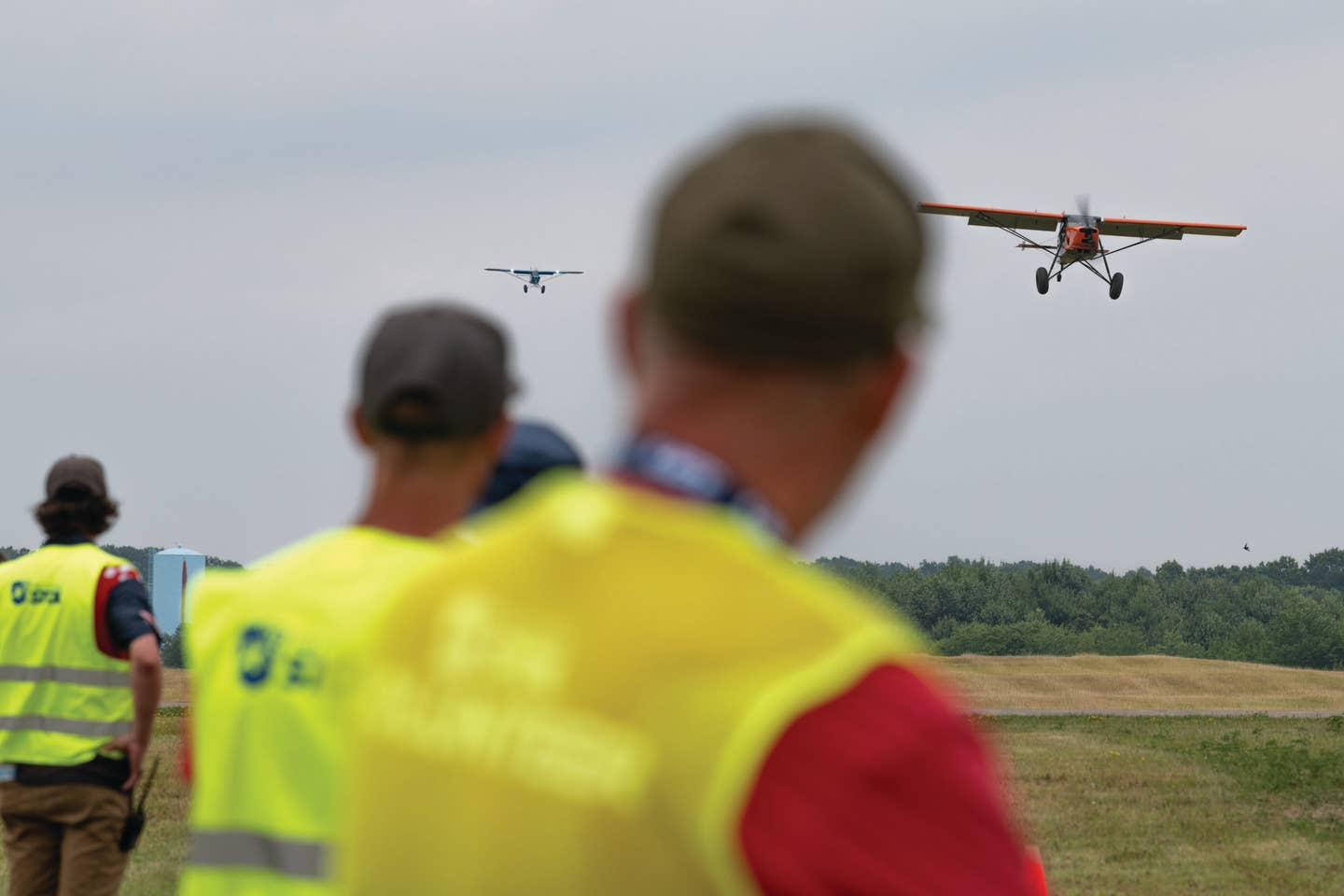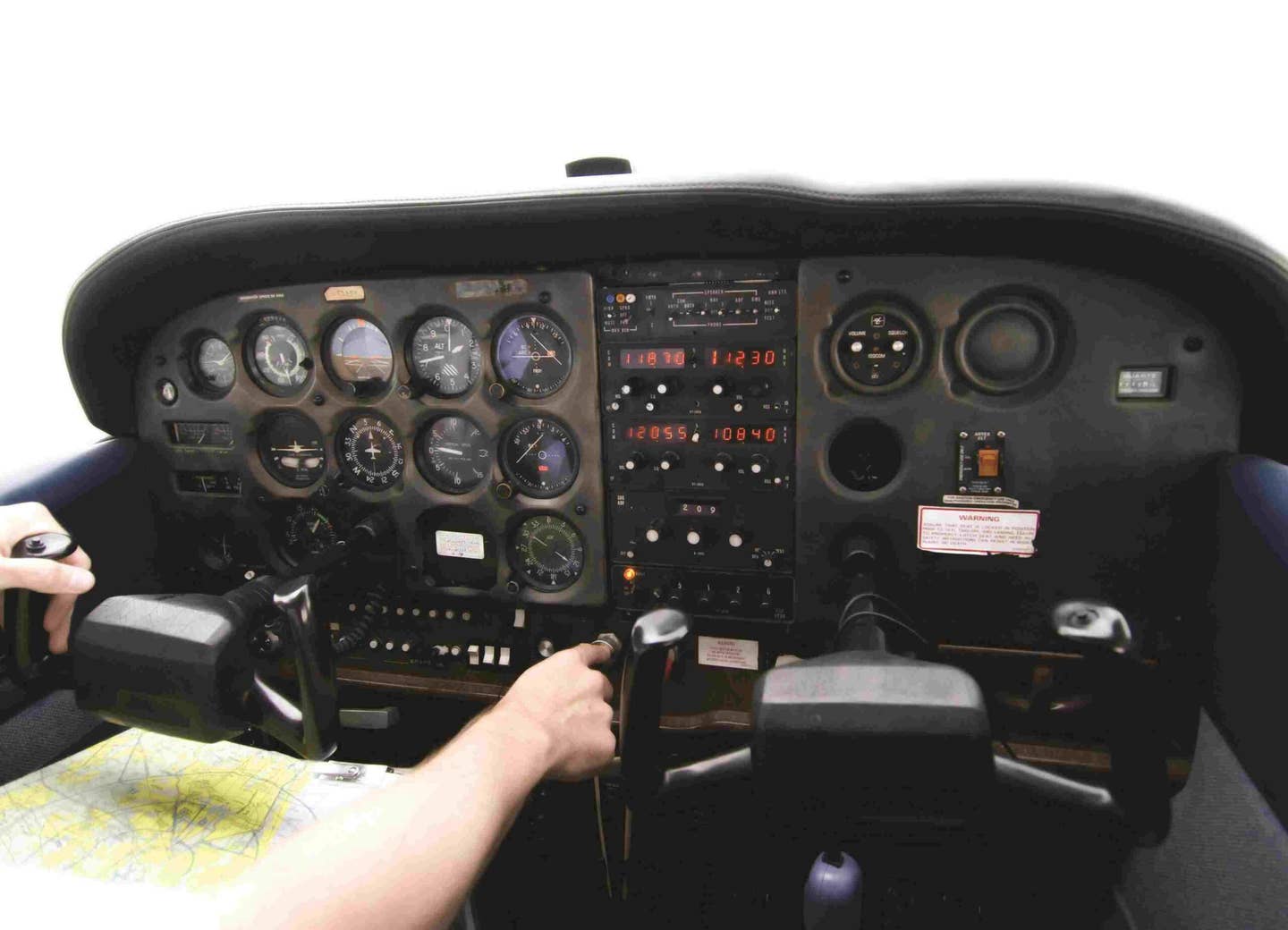Destinations: Sedona
Many consider Arizona city to be among the most beautiful airports in the United States.
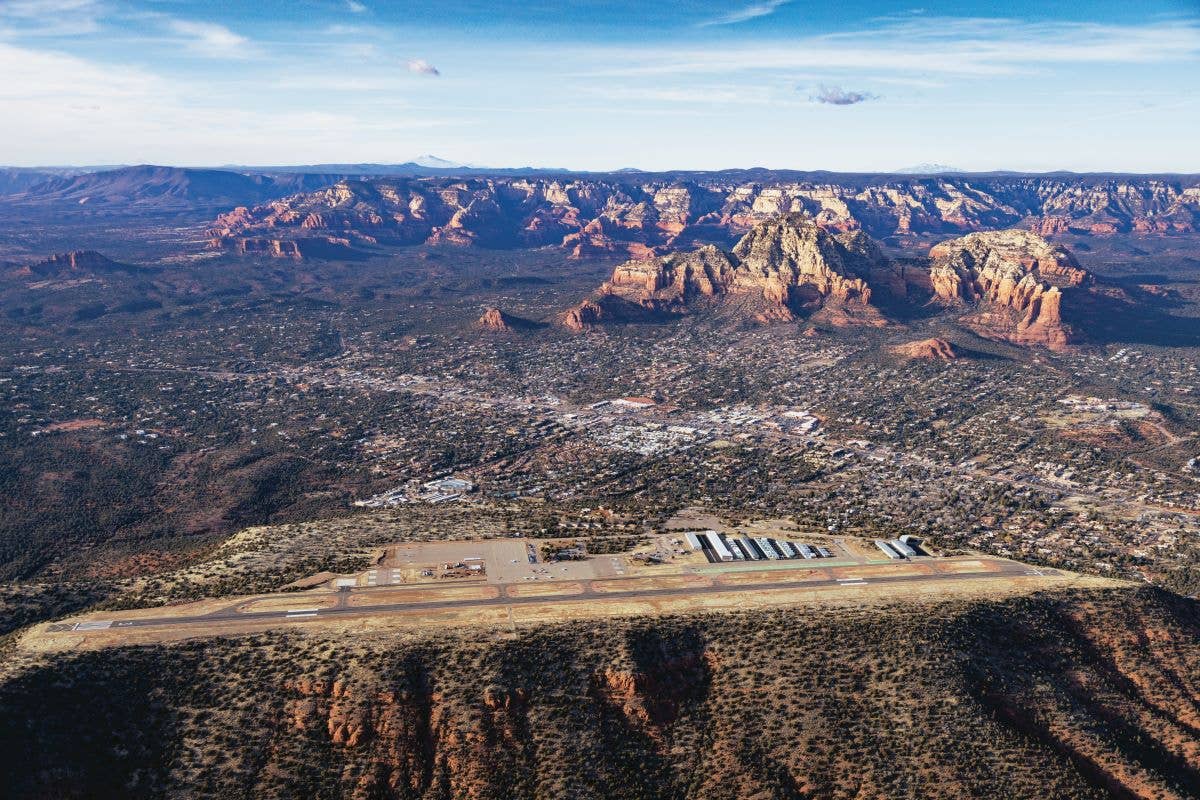
[Credit: Jim Barrett]
A recent flight into Sedona Airport (KSEZ) marked the end of an exceedingly long chapter in my life as a pilot. I felt a soothing , unexpected sense of closure as soon as the Cessna 182’s tires chirped against the asphalt, and I realize now that I might owe John King a thank-you note.
A little more than a decade ago , around the time I decided to resume flight training after a 25-year lapse, I was perusing instructional videos online, probably seeking confirmation that my decision made sense. I came across a clip from King Schools in which John is in his Mooney, talking about the payoffs of earning a pilot certificate. As he chats, he flies the traffic pattern at Sedona, lands, parks, and steps out onto the wing. The camera slowly pans to show the colorful ridges and cliffs that surround the field.
“I have to learn to fly so I can land there,” I thought. Better late than never. Indeed, I think the interim years of flying helped me appreciate the visit more than I would have a decade ago. The added experience probably made the trip safer, too.
If you're not already a subscriber, what are you waiting for? Subscribe today to get the issue as soon as it is released in either Print or Digital formats.
Subscribe NowThe Airport
Sedona Airport had modest beginnings dating to 1957, when a grant of $13,420 from the Civil Aeronautics Administration funded a paved 3,700-foot runway and a parking area. By the following year, four airplanes were based on the field, and the operators had added a hangar, runway lights, and a rotating beacon. The field was a hub for hunters who flew in and sometimes bagged their quarry right on the runway, according to the airport website.
As the airport grew, so did Sedona. By 1963 the once-obscure town had 10 churches, 14 restaurants, 21 motels, and three art galleries. In 1968 the airport extended its runway to its current length. A decade later, there were 35 airplanes based there and an average of 40 daily flight operations, many of which were charters. The airport restaurant opened in 1981, and the Sky Ranch Lodge and Motel opened in 1982 with 35 units, and has since expanded to 94.
You might have heard that Sedona, which today calls itself “America’s most scenic airport,” is the most beautiful landing spot you will ever find. There is a good chance this will be true. Its unique location atop a mesa, high above the town of Sedona and surrounded by the soaring red sandstone ridges and formations for which the area is famous, certainly sets it apart from the airports I frequent.
As a pilot based in the Northeast, I have landed on many strips with stunning views, like Great Barrington, Massachusetts (KGBR), a leaf-peeper’s dream in early autumn. Rhode Island’s Block Island (KBID) is known for its dramatic left downwind for 28, which showcases cliffs to the left and wind turbines sprouting from the ocean on the right. Impressive indeed, but no match for Sedona’s visuals. It is easy to see why this airport is a bucket-list destination for so many pilots.
You may also have heard or read that Sedona is a dangerous airport. It isn’t, but pilots should approach it with care. There are visual and psychological elements to consider, like the steep drop offs and rocky terrain at each end of the 5,132-by-100-foot runway and along its southeastern edge that can make the strip appear shorter and narrower. These features also give operations a high-stakes feel, especially when mixed with a little turbulence or a crosswind.
Runway 3 has an upward slope, which can give pilots the sense that their approach is too high, with the opposite effect on 21. Maintaining perspective in general can be challenging in the pattern because of the surroundings. The beauty of the colorful ridges is potentially distracting, and their scale might make judging distances difficult, especially for pilots unaccustomed to the Southwest’s vastness. While 3 is the preferred calm-wind runway, pilots tend to land on 3 and take advantage of the downhill run on 21 for takeoffs.
If you are flying there for the first time, planning is especially important. Pilots who typically fly at lower elevations can prepare for Sedona by perusing the FAA’s numerous publications on high-altitude operations, reading one of the many books available on flying from high-elevation airports—Sparky Imeson’s Mountain Flying is a good one—and seeking advice from local pilots.
Mind the Density Altitude
While you might have felt the effects of density altitude when flying from your home airport nearsea level during a heat wave last summer, the effect at Sedona’s 4,830-foot field elevation might still surprise you. When visiting Sedona I flew with Greg Brown, a seasoned flight instructor and author with years of experience flying in Arizona’s high country. He briefed me on what to expect and how to stay out of trouble when flying in thin air.
Brown’s 1979 Cessna 182 was good at demonstrating the loss of performance a typical naturally aspirated piston aircraft will experience as elevation increases. It felt reluctant to accelerate—at least by 182 standards—and used nearly half the runway before lifting off. Having spent time flying in 182s close to sea level, I know how quickly they get off the ground when conditions are ideal. In Sedona we still had more than enough runway to operate safely, but the altitude’s effect was noticeable even on a cool winter morning. “You can imagine how it would be during the summer,” Brown quipped.
As long as you gather reasonable intelligence in advance and brush up on your aircraft’s performance charts, arriving at Sedona Airport will be a highlight of your flying career and the beginning of a fun, engaging visit.
Things to See and Do
There is a lot going on in Sedona, starting with the airport, which is home to airplane and helicopter tour operators. Red Rock Aviation is the FBO, which in addition to the usual fuel and parking services, also operates Sedona Car Rentals. Cars are available by the week, day, and hour. Hourly rentals are meant to offer convenience similar to that of the free crew cars once common at GA airports. Visitors can also rent Harley-Davidson motorcycles from Eagle Rider Rentals and Tours, which also has an office in the terminal.
The Mesa Grill, which overlooks the runway, has a menu well beyond typical airport restaurant expectations, and the Sky Ranch Lodge hotel, where I spent two nights, is a two-minute walk from the airport. A popular lookout area that draws a crowd all day is a few steps away from the hotel. The Airport Loop Trail follows the perimeter of the airport, mostly at a lower elevation. In fact, hikers have little indication that they are on the edge of an airport for much of the 3.2-mile trail.
It might seem like everything you need is within a few steps of the airport, but you need to go into town to get a true appreciation for Sedona, which reminds me a bit of Palm Springs, California, only much smaller and a bit newer. While the development of Palm Springs got going during the 1930s and took off in the ‘50s, Sedona didn’t awaken as a destination until the airport arrived in the 1950s, and even then the pace was slow until around the 1980s when much of the construction that now characterizes the town took place.
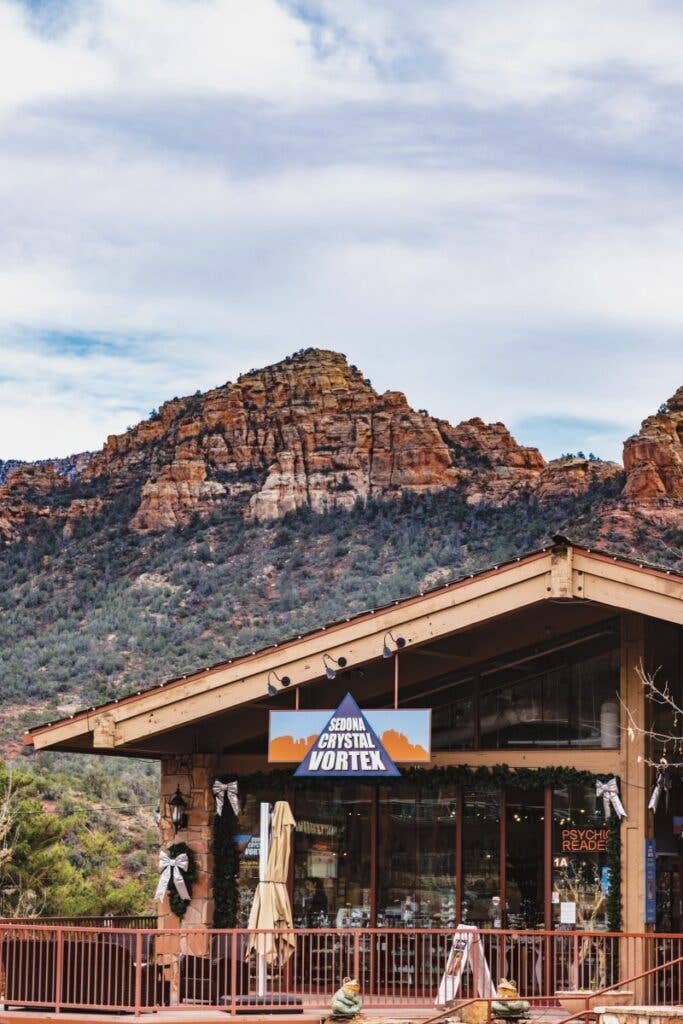
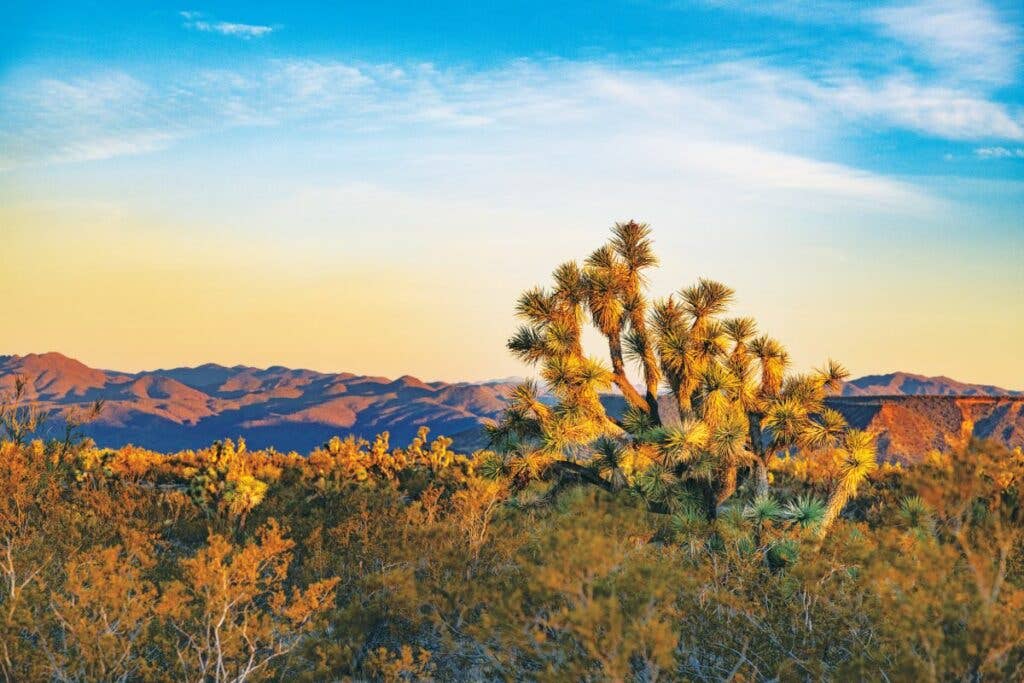
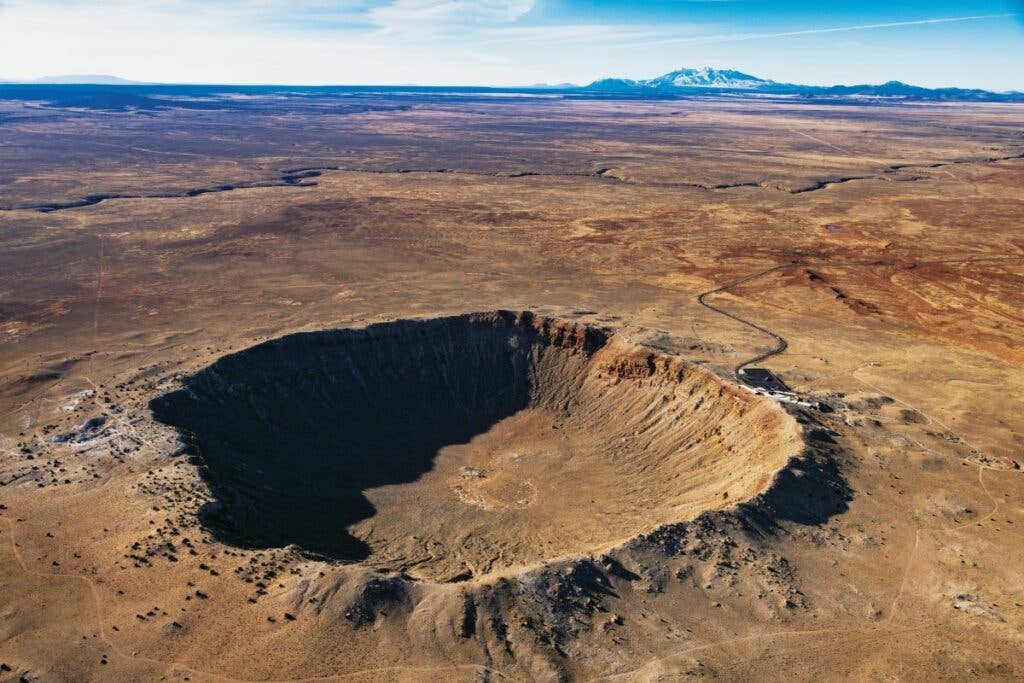
The town thrives on tourism, so visitors have lots to do, from dining and shopping to hiking; hitting the trails on mountain bikes, ATVs, and jeeps; and sightseeing from airplanes, helicopters, or hot-air balloons. Top sites include Red Rock State Park, Chapel of the Holy Cross, and the Verde Valley Wine Trail.
About Those Vortices
People say Sedona is a center for vortexes, or vortices, which some believe are areas of enhanced energy that can help meditation, healing, prayer, and creative thinking. The airport mesa is one such spot, known as an upflow area, that is supposed to foster reflection, problem-solving, stress reduction, and a feeling of being one with the universe. A few people I spoke with told me I would have the best chance of feeling the energy around sunrise or sunset.
I did have a lovely sunrise hike around the mesa on my first morning there, and an energetic run the next day, despite the altitude. I cannot attest to feeling anything out of the ordinary, but I understand the vortex effect can be subtle.
There is nothing subtle about vortices as marketing tools throughout the town, though. References abound. My favorite was a shop on the main drag called Sedona Crystal Vortex.
Flying Out
As nice as Sedona is, pilots should remember that there are other airports in the area competing for their attention. There really are so many places to go. Brown and I visited several of them, including Payson (KPAN), known for the Crosswinds Restaurant on the field and the pies served there. We also stopped at Glendale (KGEU), which is sandwiched by Phoenix SkyHarbor (KPHX) and Luke Air Force Base. Glendale offers GA pilots convenient access to the greater Phoenix area and an opportunity to sharpen their radio procedures while negotiating the busy airspace.
Brown is based at Flagstaff (KFLG), another scenic airport roughly 20 nautical miles north of Sedona and more than 2,000 feet higher. He described the sensation of taking off there and essentially flying “down the hill” to land at KSEZ. When you fly around Arizona for a few days, you gradually get used to flying situations you might never have considered before, like having lots of terrain above you most of the time and cruising at, say, 9,500 feet and worrying that you still might be too low.
While checking out other airports, be sure to catch some of the wonderful scenery beyond Sedona’s red rocks. Brown and I explored numerous formations, traversed the Painted Desert, circled the Meteor Crater Natural Landmark in Winslow, and spotted the remains of old airmail route markers, all within a short flight of Sedona.
Speaking of scenery, there's one more attraction you might stop by while you are in the area. Yes, the Grand Canyon is only about 70 nm north-northwest of KSEZ.
This article was originally published in the March 2023 Issue 935 of FLYING.

Sign-up for newsletters & special offers!
Get the latest FLYING stories & special offers delivered directly to your inbox


